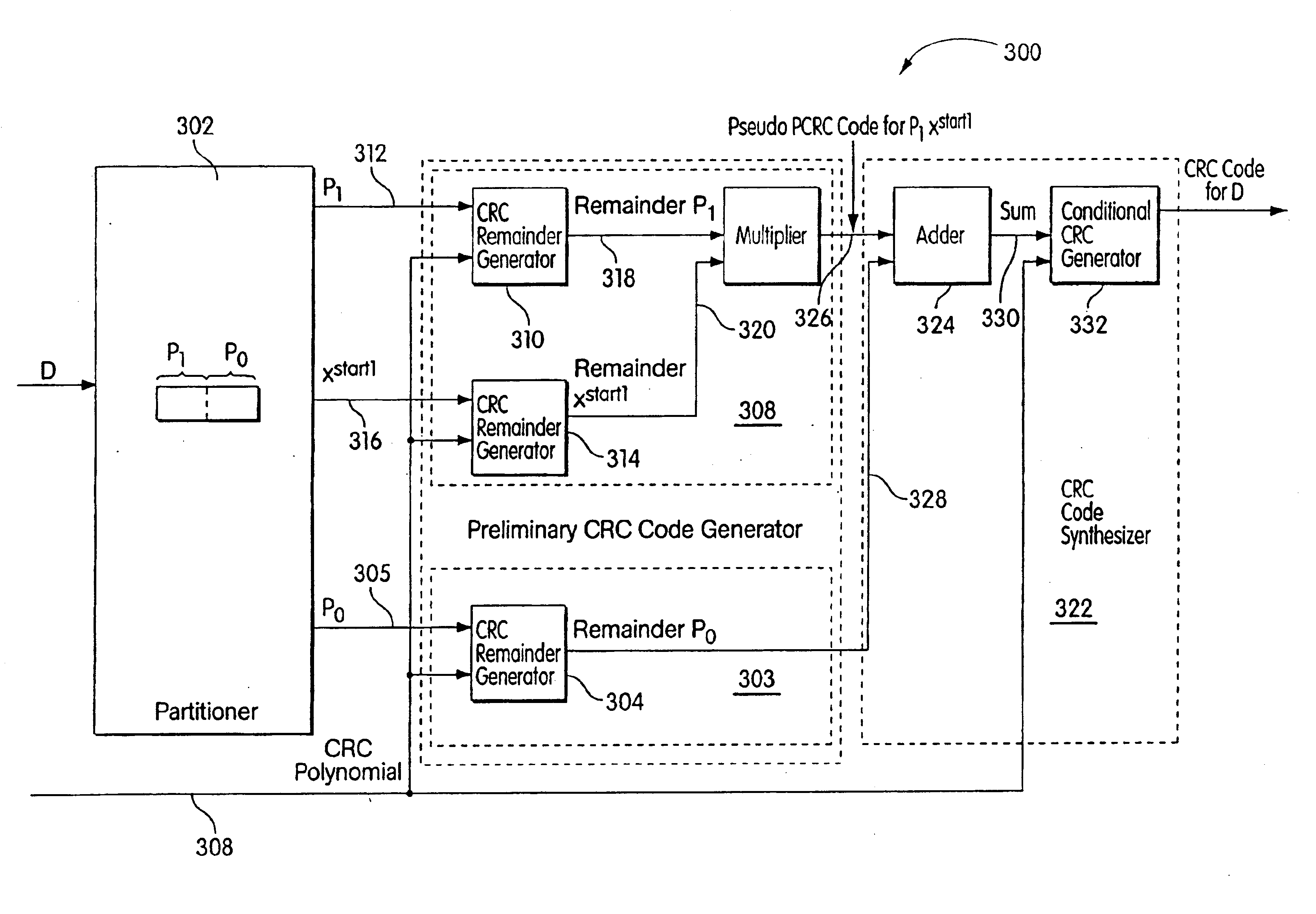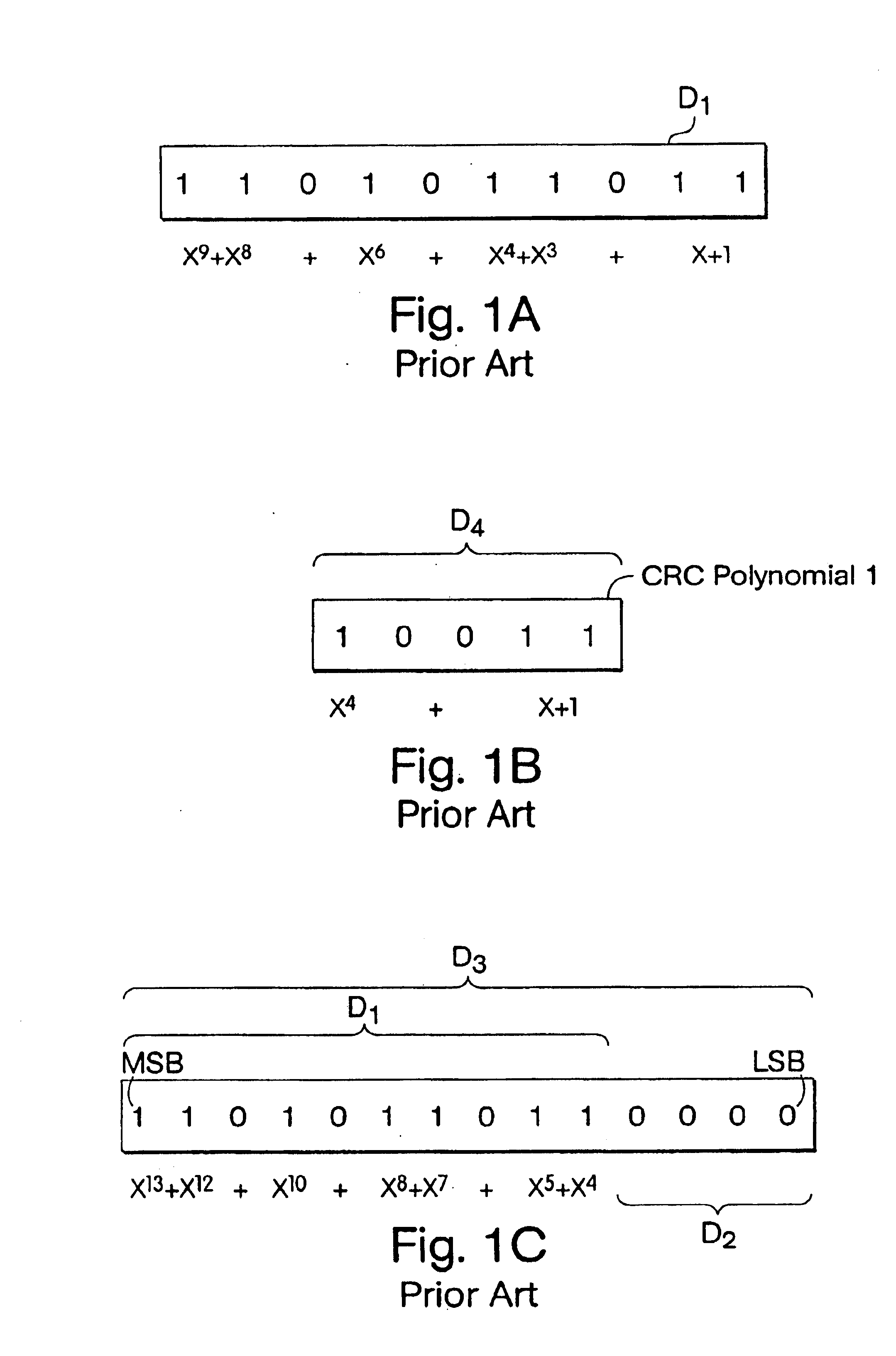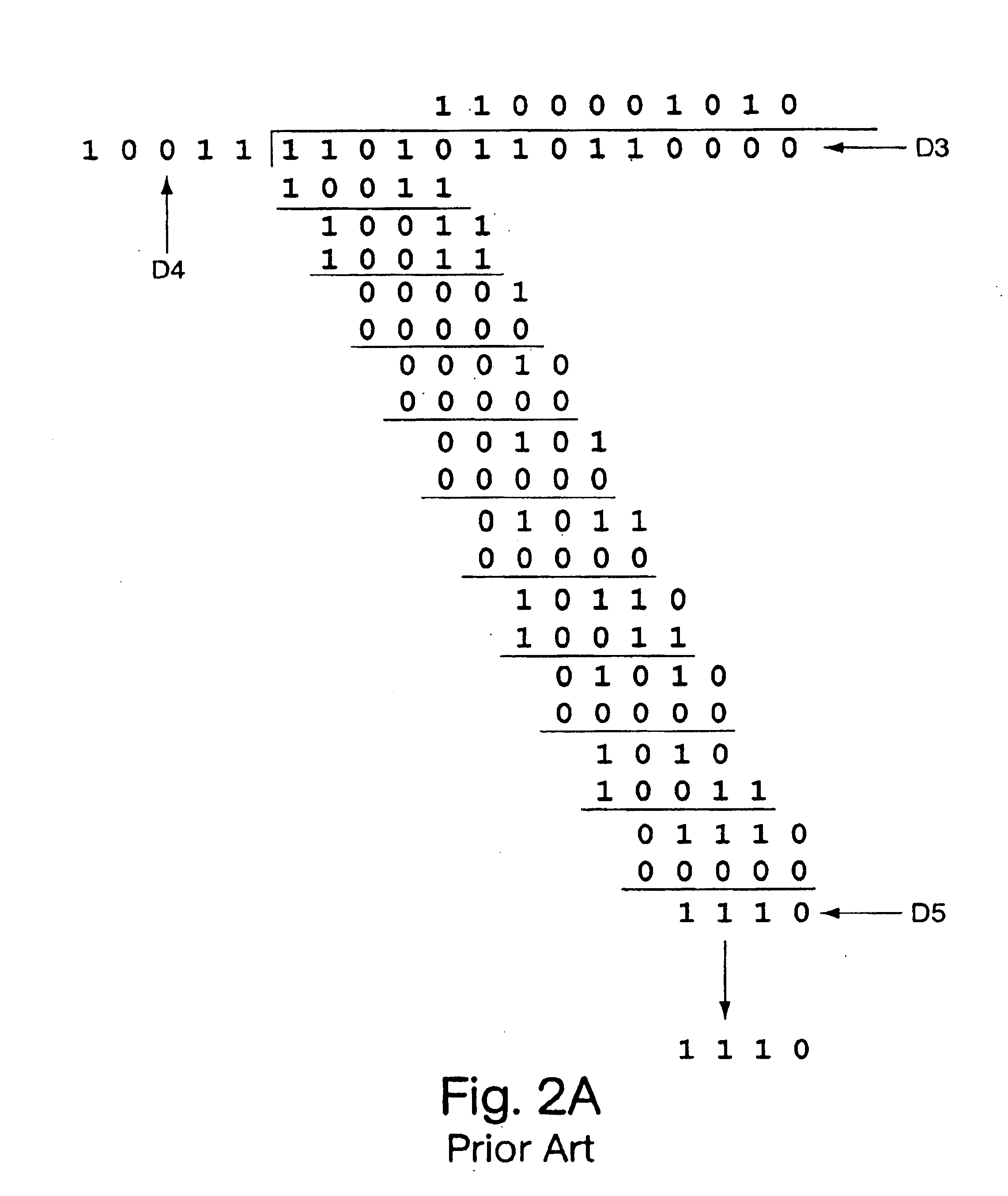Method, apparatus, and product for use in generating CRC and other remainder based codes
- Summary
- Abstract
- Description
- Claims
- Application Information
AI Technical Summary
Benefits of technology
Problems solved by technology
Method used
Image
Examples
embodiment 260
[0145]FIG. 6 illustrates another embodiment 260 of the data processor 240 of FIG. 5A. This embodiment of the data processor includes a partitioner 262 that receives a block of data D and partitions the block of data D into exactly two portions, i.e., a first portion P0 and a second portion P1. The first portion P0 and the second portion P1 are supplied on lines 263, 264 to a preliminary CRC code generator 266, which further receives data indicative of a CRC polynomial on a line 268 and generates two PCRC codes. One of the PCRC codes, referred to as PCRC code for P0, is associated with the first portion P0 of the data block. The other of the PCRC codes, referred to as PCRC code for P1, is associated with the second portion P1 of the data block. The data indicative of the PCRC code associated with the first portion P0 and the data indicative of the PCRC code associated with the second portion P1 are supplied on lines 270, 272 to a CRC synthesizer 274 that combines the PCRC codes for t...
embodiment 300
[0148]FIG. 8A shows one embodiment 300 of the data processor 280 of FIG. 7, and which may for example be used to carry out the operations shown in the example of FIGS. 4A-4F. In this embodiment 300, the data processor includes a partitioner 302 that receives a block of data D representative of a bit string. Referring to FIG. 3B, the bit string has N bits including an LSB, bit 0, and an MSB, bit N−1. The partitioner 302 partitions the bit string into exactly two portions, portion P0 and portion P1. Portion P0 comprises bit start P0 (i.e., the LSB, bit 0) of the data string through bit end P0 of the data string. Portion P1 comprises bit start P1 of the data string through bit end Pk−1 (i.e., the MSB, bit N−1) of the data string.
[0149]FIG. 8C shows an example of the operation of the partitioner 302. In this example, the block of data D is the bit string “11010110110000” of FIG. 1C. As stated above with respect to FIG. 1C, the block of data D can be viewed as representing coefficients o...
embodiment 430
[0175]In this embodiment 430, the second one of the preliminary CRC code generators 436 includes a multiplier 444 which has a first input that receives data indicative of the second portion P1 at line 446 and a second input that receives data indicative of the polynomial xstart1 at line 448. The multiplier generates data indicative of a product, P1*xstart1, which is supplied on a line 450 to an input of a CRC remainder generator 452. The CRC remainder 452 generator further receives data indicative of a CRC polynomial on the line 442 and generates data indicative of a CRC remainder for the product P1*xstart1. The data indicative of a CRC remainder for the product P1*xstart1 is considered associated with the portion P1.
[0176]The data indicative of a CRC remainder for the product P1*xstart1 and the data indicative of a CRC remainder for portion P0 are input on lines 454, 456 respectively, to an adder 458 that generates a sum thereof . The sum is input on a line 460 to a conditional CRC...
PUM
 Login to View More
Login to View More Abstract
Description
Claims
Application Information
 Login to View More
Login to View More - R&D
- Intellectual Property
- Life Sciences
- Materials
- Tech Scout
- Unparalleled Data Quality
- Higher Quality Content
- 60% Fewer Hallucinations
Browse by: Latest US Patents, China's latest patents, Technical Efficacy Thesaurus, Application Domain, Technology Topic, Popular Technical Reports.
© 2025 PatSnap. All rights reserved.Legal|Privacy policy|Modern Slavery Act Transparency Statement|Sitemap|About US| Contact US: help@patsnap.com



